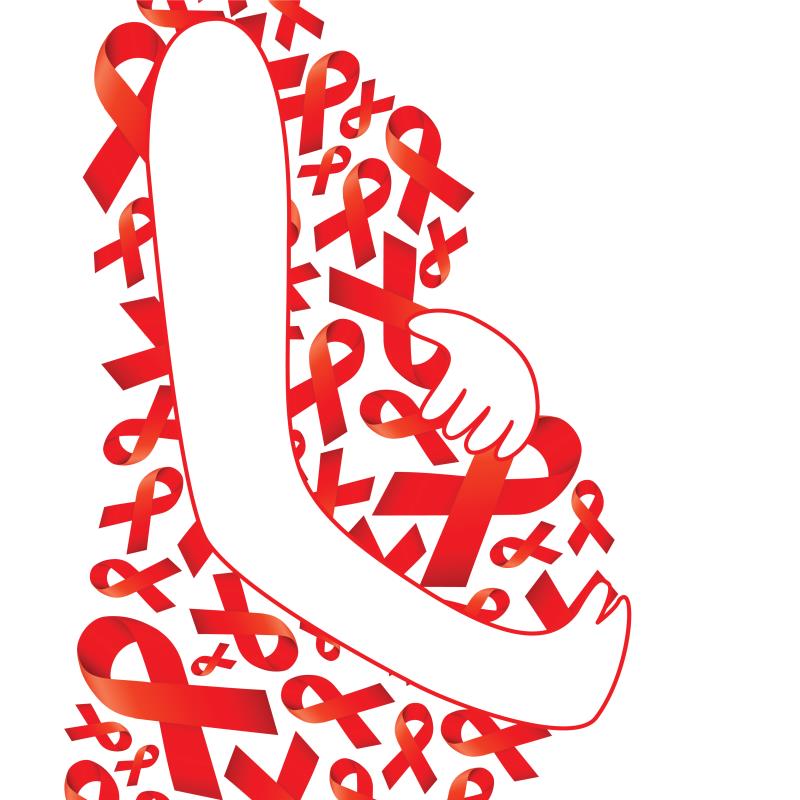
The combination of dolutegravir (DTG)/emtricitabine (FTC)/tenofovir alafenamide fumarate (TAF) has superior virologic efficacy and safety compared with an efavirenz (EFV)/FTC/tenofovir disoproxil fumarate (TDF) combination in pregnant women living with HIV (WLHIV), results of the IMPAACT 2010/VESTED* trial showed.
This phase III multinational (22 sites in nine countries) trial involved 643 WLHIV with singleton pregnancies at 14–28 weeks gestation (median age 26.6 years, median gestational age 21.9 weeks, median CD4 count 466 cells/mm3, median HIV-1 RNA 903 copies/mL) who were antiretroviral therapy (ART)-naïve**. They were randomized 1:1:1 to receive fixed doses of DTG+FTC/TAF, DTG+FTC/TDF, or EFV/FTC/TDF during pregnancy and postpartum periods. Infants received standard prophylactic ART. Women and infants were followed up for 50 weeks post-delivery.
Virologic suppression at delivery, defined as HIV-1 RNA <200 copies/mL, was greater among women who received either of the DTG regimens compared with EFV/FTC/TDF recipients (97.5 percent vs 91.0 percent; risk difference, 6.5 percent; p=0.005). [CROI 2020, abstract 130]
“We established both noninferiority and superiority of the combined DTG-containing regimens over the EFV arm with regard to virologic efficacy at delivery,” said Assistant Professor Lameck Chinula from the University of North Carolina (UNC) School of Medicine, North Carolina, US, and clinical research site leader at UNC Project Malawi.
The incidence of any adverse pregnancy outcome was significantly lower among DTG/FTC/TAF compared with EFV/FTC/TDF recipients (24.1 percent vs 32.7 percent; p=0.047) and DTG/FTC/TDF recipients (32.9 percent; p=0.043). This was primarily due to a lower preterm delivery rate among DTG/FTC/TAF vs EFV/FTC/TDF recipients (5.8 percent vs 12.1 percent; p=0.023). There was no significant difference between any of the regimens for small for gestational age and stillbirths, though the latter was numerically higher among DTG recipients. No spontaneous abortions occurred.
At 50 weeks postpartum, maternal grade ≥3 adverse events (AEs) did not significantly differ between DTG/FTC/TAF, DTG/FTC/TDF, and EFV/FTC/TDF recipients (20.7, 26.0, and 22.3 percent, respectively), nor did infant grade ≥3 AEs (13.9, 16.3, and 20.8 percent, respectively). There was a significantly lower rate of neonatal death (at ≤28 days) in the DTG/FTC/TAF vs EFV/FTC/TDF arm (1.0 percent vs 4.8 percent; p=0.019). Two infants tested positive for HIV within 14 days of delivery, one in each of the DTG arms.
While DTG/FTC/TAF recipients had significantly greater weight gain compared with EFV/FTC/TDF (0.378 vs 0.291 kg/week; p<0.001) and DTG/FTC/TDF recipients (0.319 kg/week; p=0.011), these gains were lower than the Institute of Medicine (IOM) recommended weight gain of 0.42 kg/week during the second and third trimesters.
“When a woman living with HIV is expecting, she can be confident that the same ART she takes every day to protect her own health also helps protect her future child from acquiring HIV,” said Dr Anthony Fauci, director of the National Institute of Allergy and Infectious Diseases (NIAID) which sponsored the trial.
“Our study results affirm the WHO recommendation to use DTG in all populations, including during pregnancy, and showed that TAF may be preferable to TDF in pregnancy,” said Chinula.
“Findings from the VESTED study suggest that a drug regimen containing DTG provides the safest, most effective HIV treatment available during this critical time for women and their infants,” echoed Fauci.